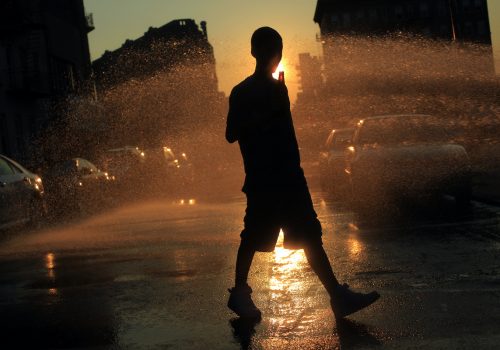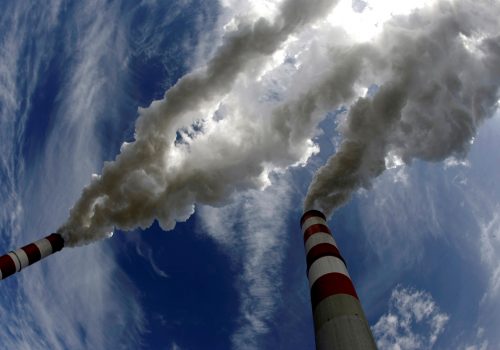Deploying distributed renewable energy to reduce the impacts of extreme heat on the urban poor
Increased urbanization and related demographic shifts, combined with the growing threat of heat stress, extreme heat events, and other climate change–related impacts, are set to continue to strain urban centers in the coming decades. In the developing world, 215 million low-income people across five hundred cities are projected to experience dangerous heat extremes by 2050, marking an eightfold increase in exposure to extreme heat compared with today.
This paper explores the potential for distributed renewable energy (DRE) to play an increased role in mitigating heat risk in large urban and peri-urban settlements via its integration into passive and active cooling solutions. Currently, improving and increasing energy access and related service infrastructure in cities often follows a slow, formal, and traditional planning and execution approach, usually as a function of local priorities and other interests that municipal authorities manage day-to-day. Within that context, power deficits within city limits—often experienced by those living in slums and informal settlements— are not usually identified as issues of pressing concern, but rather are understood to be symptomatic of rapid and unplanned growth—in short, “growing pains.” Therefore, the method of extending power to marginalized populations in informal settlements is often viewed as eventual grid extension, leaving the current barriers to acquiring and maintaining reliable energy access in those areas without sufficient attention and resources.
Lags in service delivery caused by this traditional approach necessitate consideration of the integration of DRE, traditionally applied in rural and “last-mile” electrification. DRE presents an alternate, versatile, and relatively speedy infrastructure extension strategy that should be further explored as part of a broader engagement to provide solutions, built in conjunction with community stakeholders. This approach seeks to benefit from trends in the renewable energy industry, including declining capital cost, rapid deployment, a reduced need for centralized coordination, and a cleaner environmental footprint.
There is limited experience globally in using DRE to provide reliable and cost-effective energy access to inhabitants of slums and new informal settlements in heavily populated urban centers, let alone as part of extreme heat risk reduction. But given the reality of more frequent and severe heat waves around the globe, and the opportunity presented by DRE to connect at-risk populations with a reliable energy supply for cooling, policymakers and urban planners should better understand the use case for DRE and the possibility for developing an integrated solution to prepare their cities’ residents for future heat hazards. This paper highlights existing gaps in what is known about this intersection and advocates for further research on this topic as well as consideration of targeted pilots to fill knowledge gaps and increase energy access for cooling purposes.
Action points
- Further research is needed on the potential for DRE to be deployed as part of active and passive cooling measures as an innovative method of extreme heat risk reduction.
- Organizations with extensive expertise in extreme heat and cooling should lead in conducting two to three pilot projects that identify and address open questions, validate operating assumptions, and leverage alliances and partnerships.
- These pilots should result in proposed creative pathways to passive and active extreme heat risk reduction measures in informal settlements.
Related content

The Adrienne Arsht-Rockefeller Foundation Resilience Center will reach one billion people with resilience solutions to climate change, migration, and security challenges by 2030. We will focus our efforts on individuals, communities, and a broad spectrum of governments and institutions to help them, and their constituencies and stakeholders, better prepare for, navigate, and recover from shocks and stresses. We will help build a more resilient world.
Image: Photo by Kobby Mendez on Unsplash


